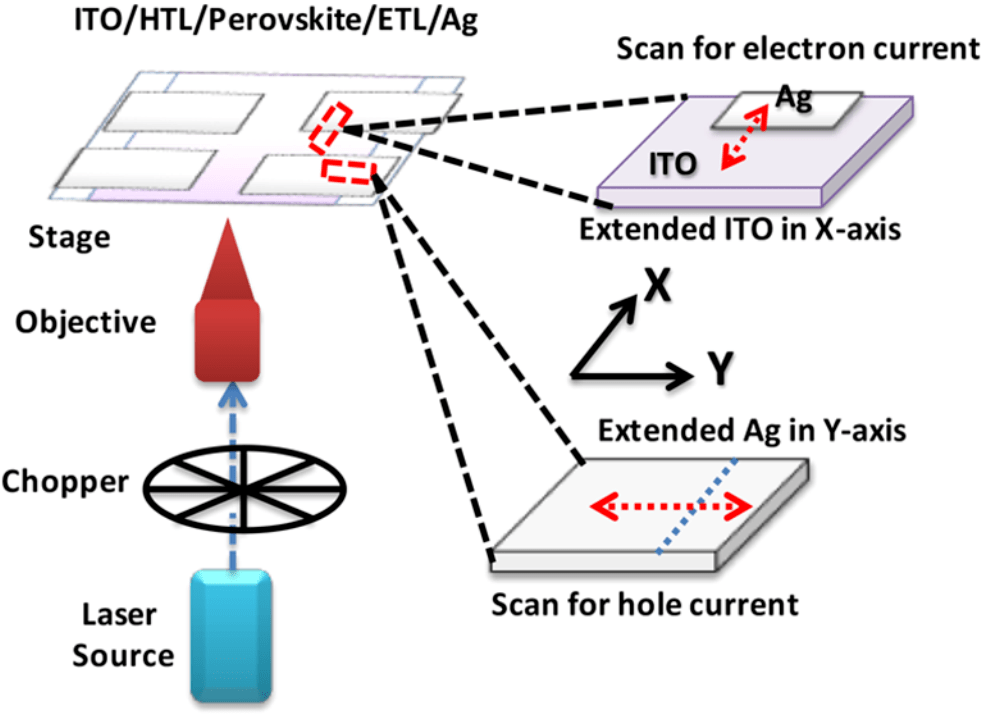


The charge transport and photophysics behind perovskite solar cells are still under study because of the exotic defect dynamics of these disordered semiconductors. Recently, NCPRE’s thin-film group headed by Prof. Dinesh Kabra found that the various parameters like charge carrier diffusion length and dielectric relaxation decide the performance of various properties of optoelectronic devices particular in photovoltaics. A comparative study is carried out on charge transport length scale for passivated and pristine MAPI thin film-based perovskite solar cells through scanning photocurrent microscopy (SPM). The SPM study suggested an improved charge transport length (L) and degree of ambipolarity of photogenerated charge carriers (electron and hole) is passivated as compared to pristine MAPI-based PSCs. These results were found to be correlated with frequency-dependent photocurrent measurement, which shows that the relaxation time of the charge carrier is relatively lower in passivated MAPI-based PSCs. This mechanism could be explained by trap-assisted recombination, where trap states are induced by ion migration in halide perovskite films. Furthermore, passivation of traps showed an increased degree of ambipolarity in the perovskite semiconductor thin film.

Did you know?
Perovskite PV is emerging as a viable competitor to silicon on
accounts of phenomenal rise in efficiency in the past
decade from 3.8% to 25.2%.